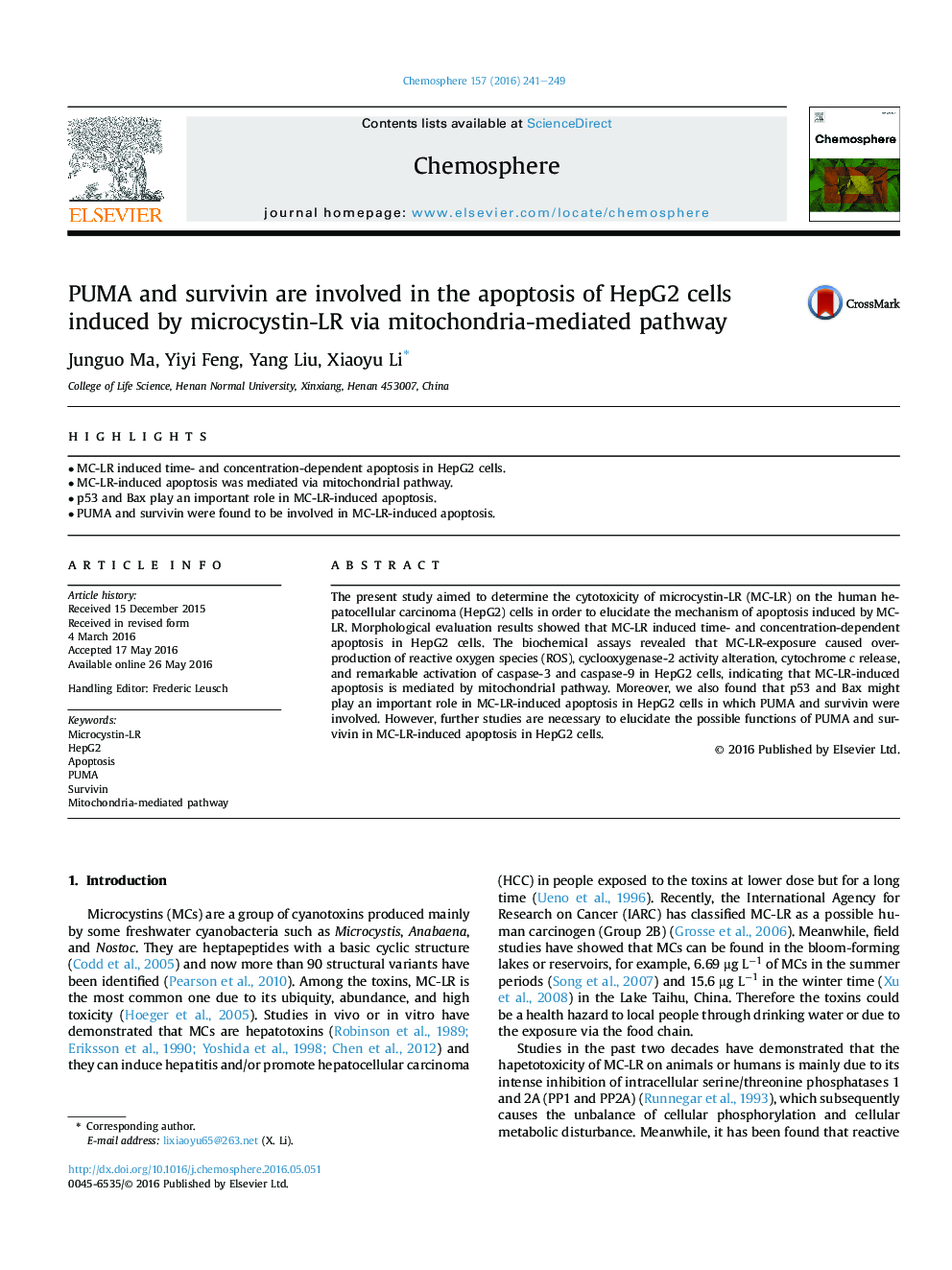| Article ID | Journal | Published Year | Pages | File Type |
|---|---|---|---|---|
| 4407612 | Chemosphere | 2016 | 9 Pages |
•MC-LR induced time- and concentration-dependent apoptosis in HepG2 cells.•MC-LR-induced apoptosis was mediated via mitochondrial pathway.•p53 and Bax play an important role in MC-LR-induced apoptosis.•PUMA and survivin were found to be involved in MC-LR-induced apoptosis.
The present study aimed to determine the cytotoxicity of microcystin-LR (MC-LR) on the human hepatocellular carcinoma (HepG2) cells in order to elucidate the mechanism of apoptosis induced by MC-LR. Morphological evaluation results showed that MC-LR induced time- and concentration-dependent apoptosis in HepG2 cells. The biochemical assays revealed that MC-LR-exposure caused overproduction of reactive oxygen species (ROS), cyclooxygenase-2 activity alteration, cytochrome c release, and remarkable activation of caspase-3 and caspase-9 in HepG2 cells, indicating that MC-LR-induced apoptosis is mediated by mitochondrial pathway. Moreover, we also found that p53 and Bax might play an important role in MC-LR-induced apoptosis in HepG2 cells in which PUMA and survivin were involved. However, further studies are necessary to elucidate the possible functions of PUMA and survivin in MC-LR-induced apoptosis in HepG2 cells.
